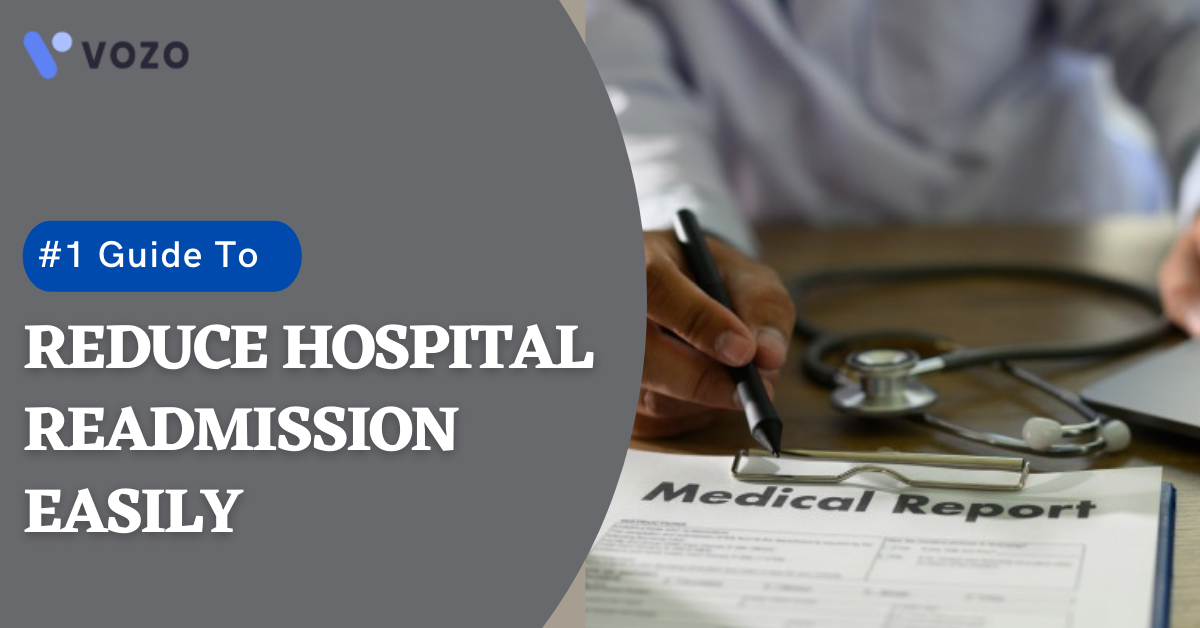#1 Guide To Reduce Hospital Readmission Easily
As we move into the age of healthcare reform, practitioners will feel the pressure to reduce possible costs and minimize preventable and unnecessary hospital readmissions.
Even though medical clinics may wind up making a net benefit from a patient’s readmission, a vital component in giving quality medical services is improved health outcomes. To drive measures that improve quality care and diminish unnecessary readmission, Medicare founded the Hospital Readmissions Reduction Program (HRRP), which reduces payments to healthcare associations with overabundance readmission. Thus, numerous medical clinics are implementing organization-wide projects and policies pointed toward decreasing emergency clinic readmission.
Medical care suppliers can’t and ought not to keep away from the readmission of patients when clinical or careful circumstances require inpatient care. However, a reasonable level of unintended readmission can and will be diminished by the usage of activities that improve quality, yet uphold patients as they progress through the care continuum. In this article, we discuss the key strategies to reduce hospital readmission easily.
Why Reducing Hospital Readmission is important?
To battle developing costs, payers across the healthcare industry are adding emergency clinic readmission quality measures to their value-based reimbursement programs. Medical clinics taking part in any model are probably going to confront penalties if their suppliers can’t improve emergency clinic readmission rates.
Medical clinics can lessen readmission rates and stay away from value-based penalties by distinguishing reasons for re admissions, streamlining transitional care, improving patient engagement, and adopting new technologies.
3 Effective Strategies To Reduce Hospital Readmission Rates
1. Improve Transitional Care
Quality transitional care has additionally been appeared to decrease hospital readmissions. Transitional care may incorporate rehabilitative, helpful, or skilled care, nutritional counseling, physical therapy, dietary planning, and more. These services are particularly valuable to patients with chronic conditions. Insufficient care transitions following a hospitalization increase the rates and expenses of medical clinic readmissions.
Communication breakdowns drive insufficient care transitions from the emergency clinic to post-intense care or home settings. The accountability challenge makes patients and other healthcare providers to get inadequate information and resources for at-home or post-intense care.
To conquer communication and accountability challenges, clinics have utilized “transition mentors” who are essentially nurses and social workers to help make and guide post-discharge care. These mentors are generally the single purpose of care for patients.
The transition mentor plays out a home visit within72 hours of discharge and finishes up with patients’ calls or home visits over the next four weeks. The mentors assist patients with overseeing prescriptions, plan follow-up consideration, perceive and react to symptoms, and complete an individual health record.
Centers for Medicare & Medicaid Services Innovation Center Models
- Patient Care Model
- Seamless Coordinated Care Model
- Community and Population Health Models
3. Improve Patient Engagement
Lack of patient – care provider communication is considered to be another barrier to effective care transitions and reduction in hospital readmission rate. Patients may do not have an adequate understanding of the medical condition.
Neglecting to remember patients in the discharge process brings about higher hospital readmission rates. Patients who revealed that they were not engaged with their care during the first experience were 34 percent bound to encounter readmission, a new Patient Experience study reported.
Failure to coordinate caregivers into discharge planning additionally means something bad for hospital readmission rates. Emergency clinics can improve patient engagement by teaching patients about follow-up care. Healthcare providers should set aside a few minutes for quiet inquiries during the hospitalization and utilize techniques, for example, data education back in which suppliers clarify conditions, treatment choices, and self-care guidelines to patients and patients repeat the data once again to suppliers.
Helping patients to remember follow-up care appointments is likewise basic to decreasing avoidable hospital readmissions. Suppliers ought to talk about what follow-up consideration involves and why it is significant, just as call, text, and email patients to help them to remember upcoming appointments. An extensive Patient Engagement Platform can adequately deal with the difficulties of co-ordinate care delivery and comprehensive care.
3. Optimize Utilization of Technology
As patients are started moving from admission to inpatient medical and specialty units, technology plays are great role in her. Not only healthcare providers need updated patient health record for proceeding with further treatments. But the hospital’s command center must keep track of a patient’s current location and also the list of equipment required to treat the patient’s health condition.
As the patients move through the healthcare continuum, technological systems like Computer Provider Order Entry, Robotic Pharmacies, Bar Code Medication plays an important role while ensuring patient safety.
RELATED: AI Is Taking EHR Documentation To The Next Level
Final Thoughts
The evolving digital healthcare landscape requires healthcare providers to adopt the new technological advancements for delivering value-based care to reduced healthcare costs, reduce readmission, and deliver optimized health outcomes. These 3 strategies can be effectively employed to reduce hospital readmission rates. Reducing readmission rates not only improve patient outcomes but also boost practice growth.
To learn more about how Vozo’s patient portal software can help to reduce hospital readmission rates – schedule a demo today.
About the author

With more than 4 years of experience in the dynamic healthcare technology landscape, Sid specializes in crafting compelling content on topics including EHR/EMR, patient portals, healthcare automation, remote patient monitoring, and health information exchange. His expertise lies in translating cutting-edge innovations and intricate topics into engaging narratives that resonate with diverse audiences.













